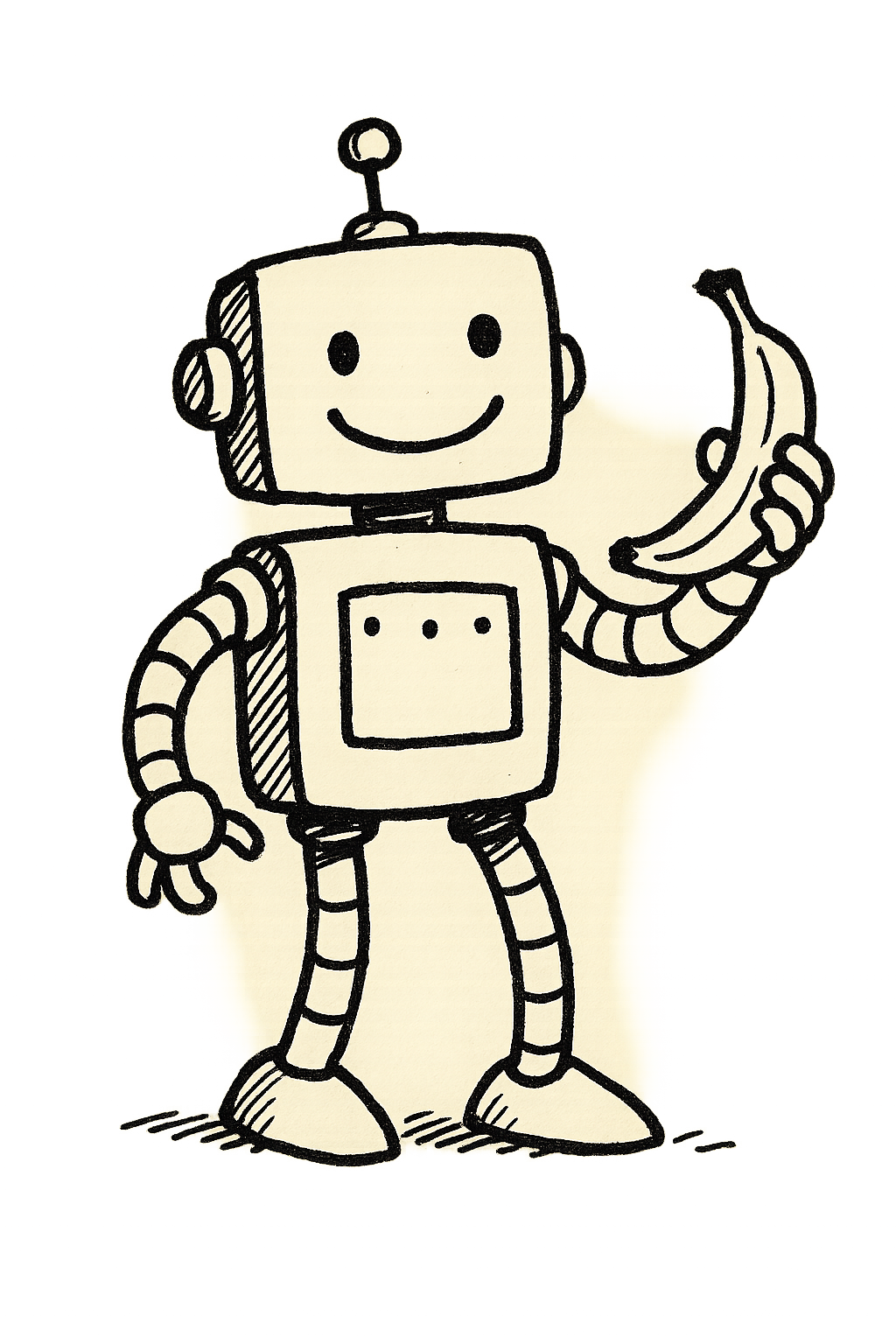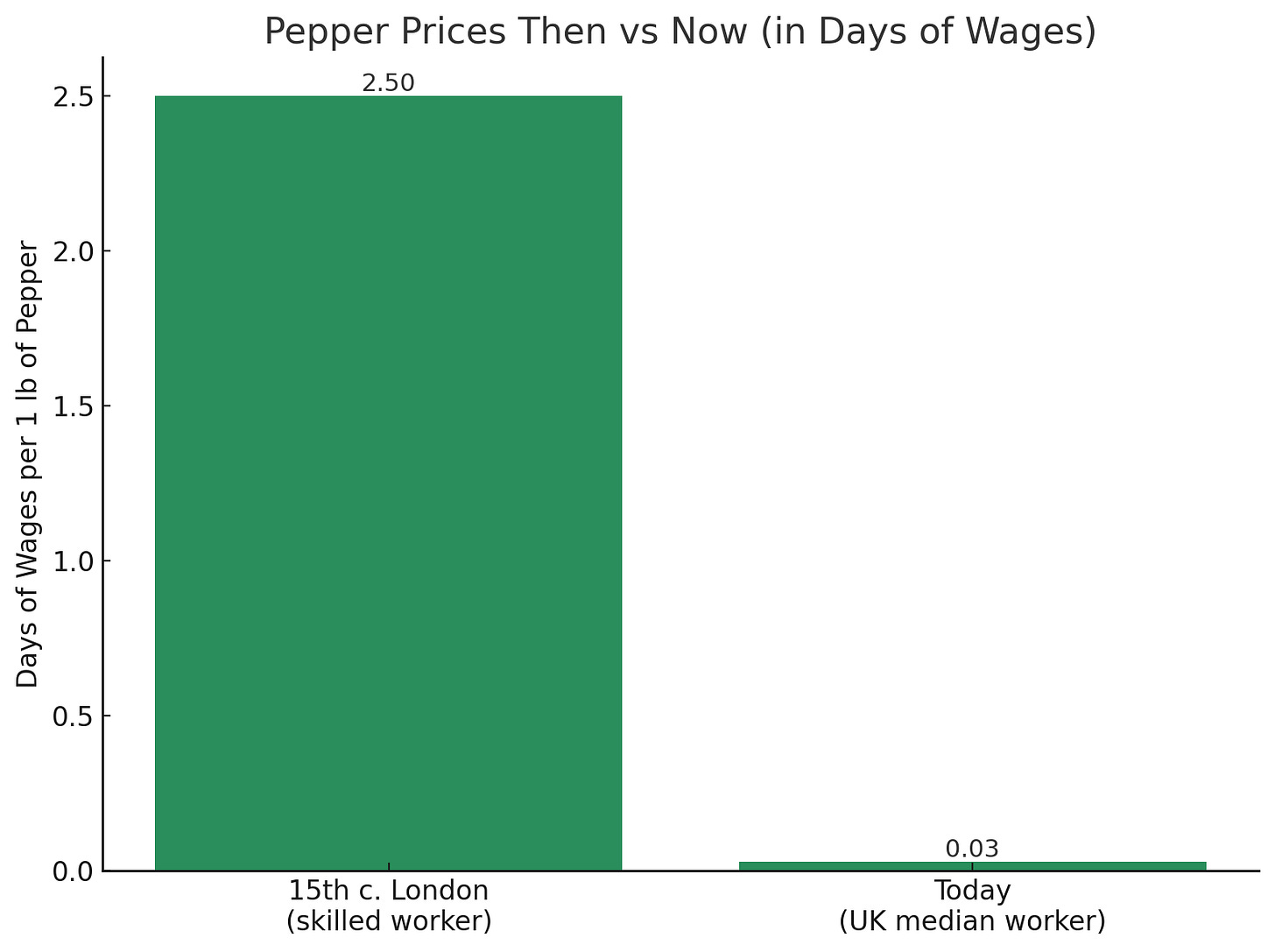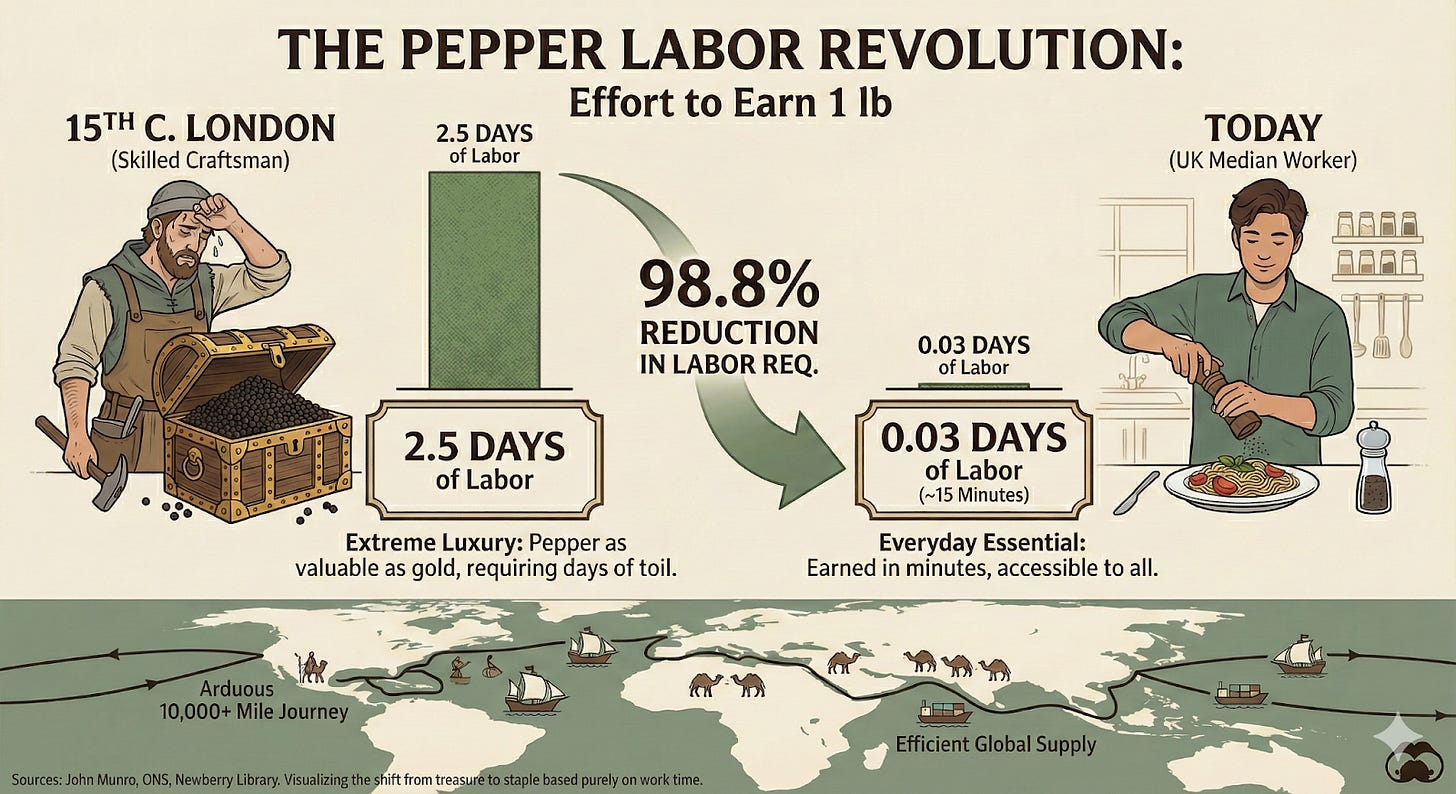Google’s New Image Model is Incredible
You need to get nano banana pilled
In the year 1438, a pound of pepper would cost a skilled London laborer two or three days’ work. They would spend Monday, Tuesday, and up to Wednesday’s lunch hauling rocks in fog rolling off the river Thames, risking life and limb, just for the smallest taste of the exotic flavor of a peppercorn. Adjusting for inflation, the price of a jar of pepper would cost us $500 today.
Now essentially all recipes call for a little bit of salt, a little bit of pepper. Recipes missing this once exotic spice taste bland or boring.
I’ve been thinking about the economics of pepper because of Google’s newest image model, Nano Banana Pro. The model makes it trivially easy to create new and useful images. For example, I copy and pasted in the same data and opening paragraph that I used to make the chart above, told it “make this chart into a good infographic” and it created this for me in maybe 3 seconds.
This graphic is not only more visually appealing. Check how it enriched the viewers’ understanding with the supply chain in the bottom third, added in the reduction in labor drop in the middle, and made the title more engaging. There are all these signs of latent taste/intelligence that made my simple chart into a graphic that I could share on social media, post in a presentation, or whatever else.
Just as pepper raised the floor on acceptable taste profile, so too does AI raise the bar for acceptable knowledge work. By dramatically reducing the time costs, and just as importantly, the training required of a knowledge laborer to make one of these, the bar for minimally acceptable quality is raised.
This email is here to notify you that change, once theoretical, has happened when it comes to images. Google’s new model—released just yesterday—s easy and powerful enough to use that you should assume that going forward all information can be made visual. This potential has always been latent in image generation models, but previous generations weren’t quite steerable enough or were just a hair short of usefulness. No longer.
As someone who has been using various image models almost daily for the last few years, trust me when I say this is the one. It is finally good enough not just for some viral tweet saying “This will change everything” but actually has the ease of use/power to finally be integrated into the most sexy/most important thing in the world: B2B SaaS. And where the workflows go, the world follows. You should expect that every application that has even the barest hint of being boring (aka all of them) will try adding more visual intelligence to what they are doing.
For paying subscribers, I’m going to list out some of the most powerful prompts I’ve found and some tips for using this tool correctly. There will be an arbitrage over the next few months where educated users can race ahead of the general populace. This is how you can be one of them.
Keep reading with a 7-day free trial
Subscribe to The Leverage to keep reading this post and get 7 days of free access to the full post archives.





